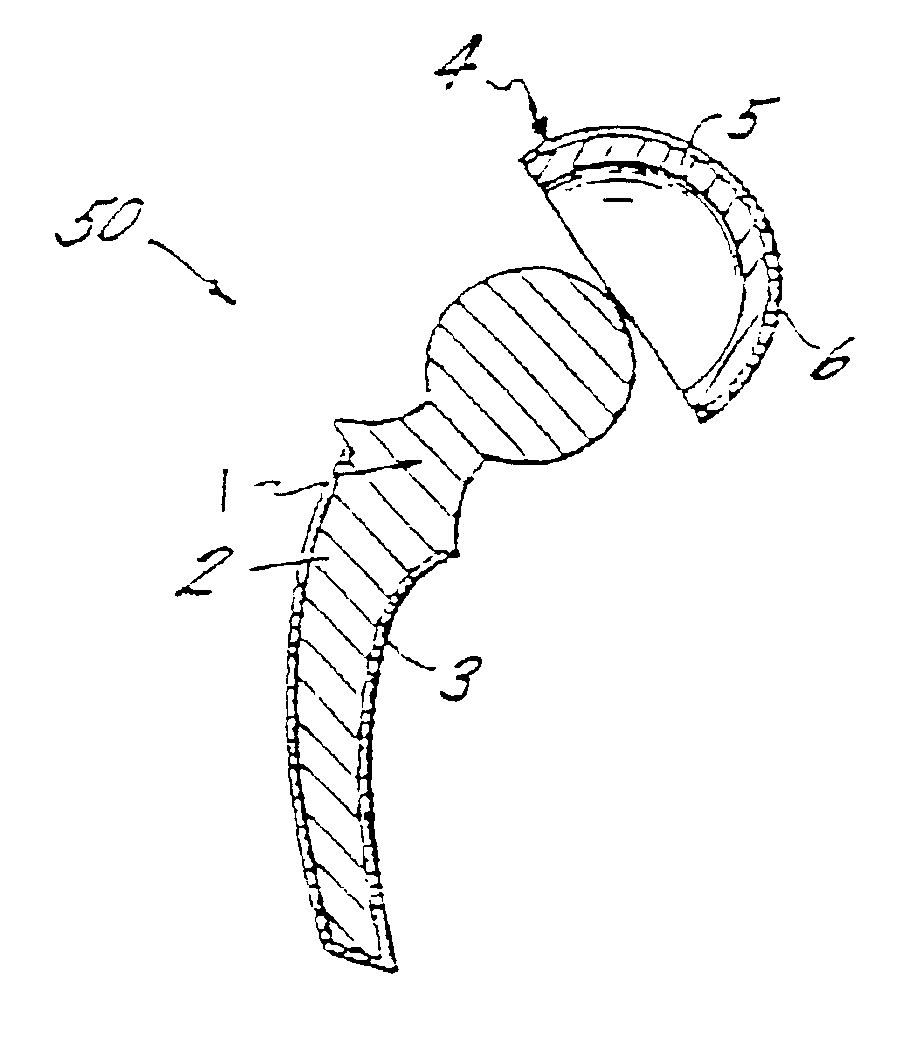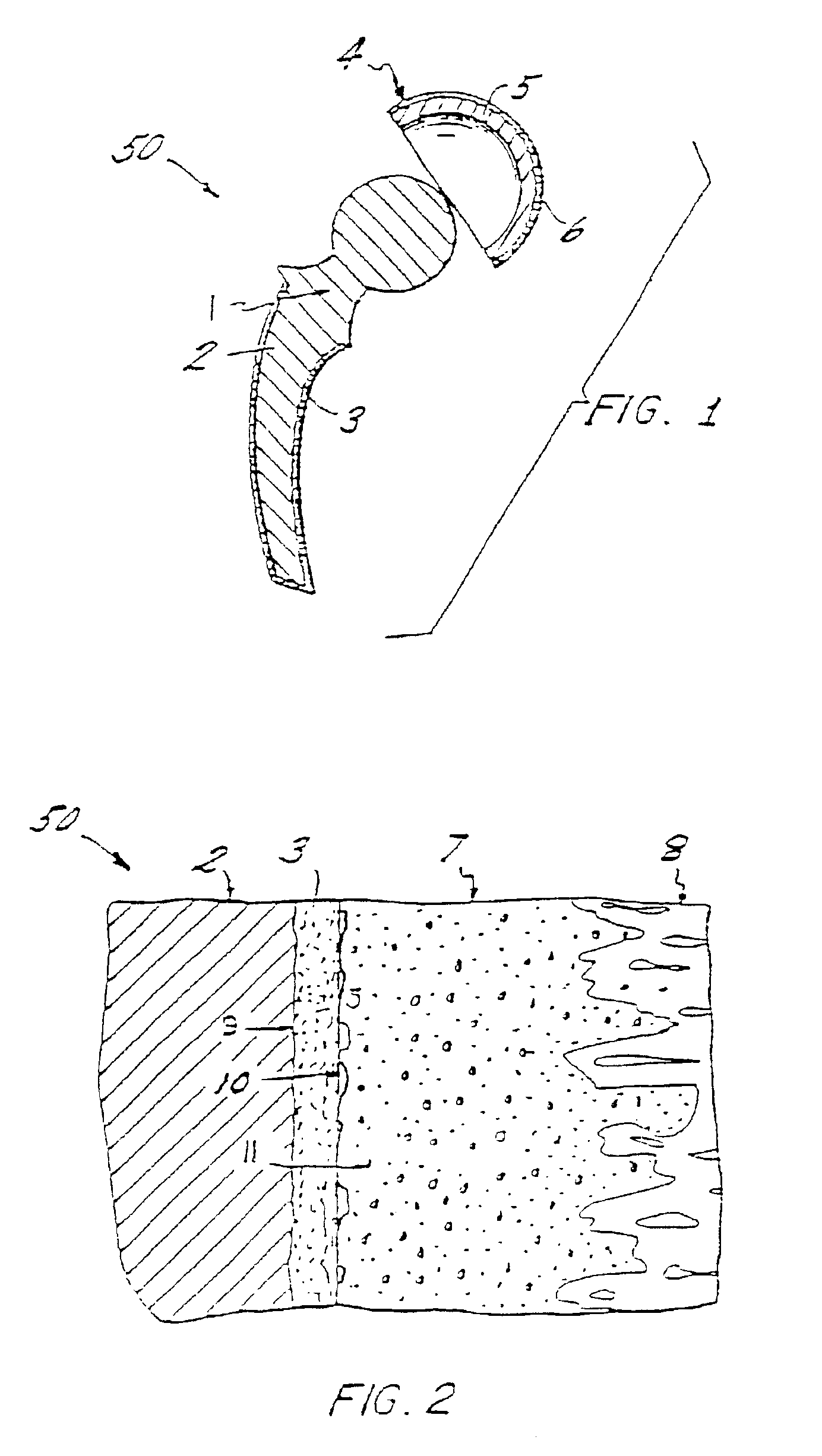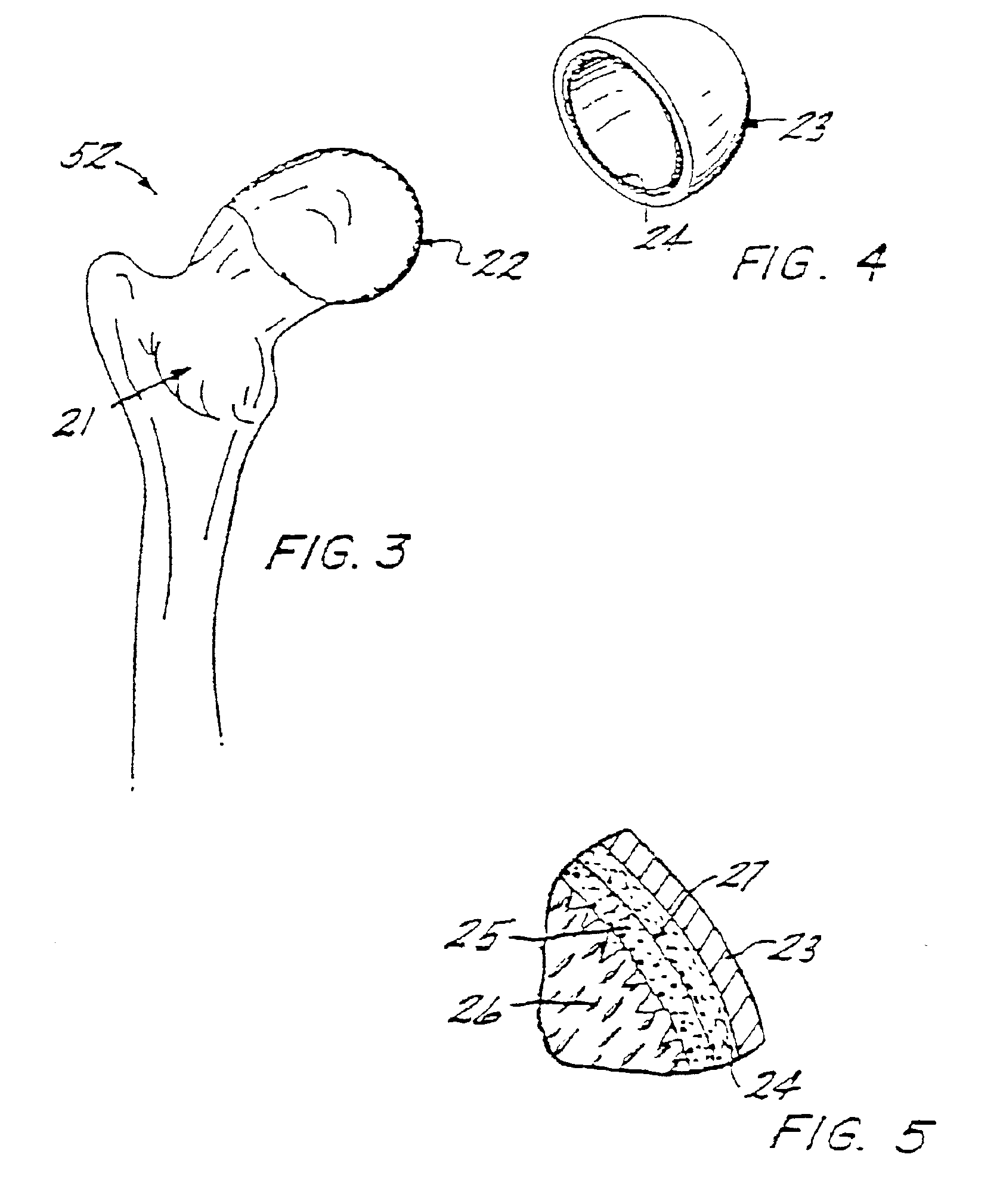Bone connective prosthesis and method of forming same
a bone connective prosthesis and bone cement technology, applied in the field of orthopaedic surgery, can solve the problems of prone to failure of prosthesis/bone cement joints, coupling of prosthesis to bone, etc., and achieve the effect of strengthening cohesion
- Summary
- Abstract
- Description
- Claims
- Application Information
AI Technical Summary
Benefits of technology
Problems solved by technology
Method used
Image
Examples
example 1
Preparation of a Prosthetic Element
[0041]Preparation of a metal prosthetic first begins by a degreasing process. The degreasing treatment may be carried out through the utilization of an aqueous alkaline solution, such as, for example, an aqueous solution of sodium hydroxide. Thus, the prosthetic element to be degreased may be immersed in a 1 N solution of sodium hydroxide which has been heated to its boiling point for 30 minutes to remove contaminants and grease. Another degreasing treatment which may be utilized with less contaminated elements comprises exposing the prosthetic element to trichloroethylene vapor. In order to determine whether or not degreasing is complete, the water break test may be utilized according to which the degreased prosthetic element is rinsed in distilled water. When the element is removed from the water, if the water beads up and runs off in less than 30 seconds, the surface is not clean enough. There should be no break in the film of water nor any tend...
example 2
Coating the Prosthetic Element with a Silane Coupling Agent
[0050]The prosthetic element may be treated with the silane coupling agent before application of the PMMA / HEMA film. When used to treat the surface of a prosthetic element, the silane coupling agent is preferably in an aqueous solution comprising about 0.1 to about 1.0 percent by weight of the silane coupling agent; and the silane coupling agent is preferably prehydrolyzed, e.g., by the addition of an acid such as acetic acid.
[0051]In a preferred embodiment, the metal prosthetic is surface treated with a silane coupling agent. Here, the prosthetic element is degreased by washing three times with methylene chloride and dried for 30 minutes at 60° C. The prosthetic element is then soaked in 10% nitric acid for 45 minutes to passivate the surface, rinsed with deionized water, and dried for at least 1 hour at 60° C. The prosthetic element is then soaked for 5 minutes in a solution comprised of 5 volumes % of 3-(trimethoxysilyl)p...
example 3
Preparation of a PMMA / HEMA / Silane Mixture Prior to Application to a Prosthetic Element
[0052]When admixed with the PMMA / HEMA coating composition, the silane coupling agent is preferably used in an amount of about 0.01 to about 1.0 weight percent based on the weight of the PMMA / HEMA. When used in admixture with the PMMA / HEMA coating, it is preferred to wipe the surface of the prosthetic element with an alcohol, e.g., a mixture comprising 15% ethanol and 85% methanol after the coating procedure is finished in order to remove excess silane which diffuses to the coating surface where it may inhibit bone cement / coating interaction.
[0053]The weight ratio of PMMA and HEMA in the copolymer bonding film is not critical; however, the portion of HEMA should suitably be in the range between 2 weight % and 99 weight %. Preferably, the HEMA is present in an amount effective to provide enhanced adhesion and plasticization without adversely affecting the strength and other advantageous properties of...
PUM
| Property | Measurement | Unit |
|---|---|---|
| thickness | aaaaa | aaaaa |
| concentration | aaaaa | aaaaa |
| concentration | aaaaa | aaaaa |
Abstract
Description
Claims
Application Information
 Login to View More
Login to View More - R&D
- Intellectual Property
- Life Sciences
- Materials
- Tech Scout
- Unparalleled Data Quality
- Higher Quality Content
- 60% Fewer Hallucinations
Browse by: Latest US Patents, China's latest patents, Technical Efficacy Thesaurus, Application Domain, Technology Topic, Popular Technical Reports.
© 2025 PatSnap. All rights reserved.Legal|Privacy policy|Modern Slavery Act Transparency Statement|Sitemap|About US| Contact US: help@patsnap.com



